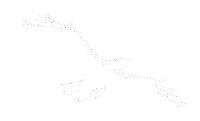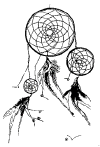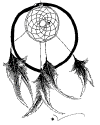CHAPTER XIX.
PROGRESS OF THE OJIBWAYS ON THE UPPER MISSISSIPPI.Ojibways
of Sandy Lake send a war party into the Dakota country--They attack a
village on the banks of the Minnesota River--Origin of the Ojibway name of
this river--Ke-che-waub-ish-ash leads a party of 120 warriors against the
Dakotas--Accidental meeting with a party of the enemy of equal strength at
Elk River--Indian fight--The retreating Dakotas are reinforced--Retreat of
the Ojibways--They make a firm stand--The Dakotas set the prairie on
fire--Final flight of the Ojibways, who take refuge on an island--A second
fight on Elk River, "Battle Ground"--Death of the war chief
Ke-che-waub-ish-ash--Brief sketch of his life.
In order to retaliate on the Dakotas the invasion which
they had made on the Upper Mississippi, which resulted in the battle of Crow
Wing, and the capturing of their women at Sandy Lake, the Ojibways, early
the following spring, collected a war party nearly two hundred strong, who,
embarking in their birch canoes, paddled down the current of the Mississippi
into the country of their enemies. They discovered no signs of the Dakotas
in the course of their journey as far down as the mouth of Crow River,
within thirty miles of St. Anthony Falls. Here they left their canoes, and
proceeding across tile country to the Minnesota River, they discovered a
village of their enemies situated a short distance from its confluence with
the Mississippi. The attack on this village, though severely contested by
the Dakotas, was perfectly successful, and the war party returned home with
a large number of scalps. The incidents of this fight were told to me by
Waub-o-jeeg (White Fisher), a present living sub-chief of the Mississippi
Ojibways, whose grandfather No-ka acted as one of the leaders of this party;
but as his accounts are somewhat obscure, and much mixed with the unnatural,
I refrain from giving the details.
This incursion to the Dakota country is, however, notable
from the fact, that it is the first visit of the kind which the Ojibways of
this section tell of their ancestors having made to the Minnesota River.
When the warriors left their homes in the north, it was early spring, and
the leaves had not yet budded. On arriving at the Minnesota River, however,
they were surprised to find spring far advanced, and the leaves on the
trees, which shaded its waters, in full bloom. From this circumstance they
gave it the name of Osh-ke-bug-e-sebe, denoting "New Leaf River," which name
it has retained among the Ojibways to the present day.
A few years after the incursion of No-ka to the Minnesota
River, the Ojibways again collected a war party of one hundred and twenty
men, and under the leadership of Ke-che-waub-ish-ashe (Great Marten) a noted
warrior, who acted as the war chief of Bi-aus-wah, they embarked in their
canoes, and floated down the Mississippi, which they had now learned to make
their chief and favorite war course. On their way down the river, the leader
every morning deputed a canoe of scouts to proceed some distance in advance
of the main body, to search for signs of the enemy, and runners were sent
ahead by land, to follow down each bank of the river, to prevent a surprise
of the party from an ambuscade of the enemy. Guarded in this manner from any
sudden surprise, the Ojibway warriors quietly floated down with the current
of the great river. On this occasion they had reached a point a short
distance above the mouth of Elk River, when the scouts in the foremost
canoe, as they were silently paddling down, hugging the eastern bank of the
Mississippi, immediately below an extensive bottom of forest trees, heard
loud talking and laughing in the Dakota language, on the bank just above
them. Instantly they turned the bow of their canoe up stream, and swiftly
stealing along close to the bank they escaped undiscovered, behind the point
of the heavy wooded bottom, we have mentioned. Here they met the main party
of their fellows, whose canoes nearly covered the broad bosom of the river
for half a mile. The scouts threw up the water with their paddles as a
signal for them to make for the eastern bank, and this signal being made
from canoe to canoe, the warriors soon leaped ashore and pulling their
canoes upon the grassy bank, they waited but to rub on their faces and
bodies the war paints, ornament their heads with eagle plumes, and secure on
their bodies the pe-na-se-wi-ame, or war medicine sack, they rushed on
without order through the wooded bottom, and as they emerged one after
another on the open prairie, they saw a long line of Dakota warriors, about
equal in numbers to themselves, walking leisurely along, following the war
path against their villages.
They were out of bullet range from the edge of the wood,
but the Ojibway warriors rushed out on the open prairie towards them, as if
to a feast, and "first come was robe best served." Their war whoop was
bravely answered back by the Dakotas who now, for the first time, perceived
them, and bullet was returned for bullet. The warriors of both parties
leaped continually from side to side, to prevent their enemies from taking a
sure aim; and as they stood confronting one another for a few moments on the
open prairie, exchanging quick successive volleys, their bodies in continual
motion, the plumes on their heads waving to and fro, and uttering their
fierce, quick, sharp battle cry, they must have presented a singular and
wild appearance. For a short time only, the Dakotas stood the eager onset of
the Ojibways. For, seeing warrior after warrior emerging in quick succession
from the wood, in a line of half a mile, they began to think that the enemy
many times out-numbered them, and under this impression, dropping their
blankets and other encumbrances, they turned and fled down the prairie
towards the mouth of Elk River. As they ran, they would occasionally turn
and fire back at their pursuers. And in this manner, a running light was
kept up for about three miles, when the Dakotas met a large party of their
fellows who had come across from the Minnesota River to join them in their
excursion against the Ojibways. With this addition, they outnumbered the
Ojibways more than double, and the chase was now turned the other way.
The Ojibways, hard pressed by the fresh reinforcements of
their enemy, ran up and along the banks of Elk River, till, becoming wearied
by their long run, they made a firm stand in a grove of oak trees, which
skirt a small prairie near the banks of Elk River. Here the fight was
sustained for a long time, the Ojibways firing from the shelter of the oak
trees, and the Dakotas digging holes in the ground on the open prairie, and
thus gradually approaching the covert of their enemies. The Ojibways,
however, manfully stood their ground, and the Dakotas after losing many
lives in the attempt to dislodge them, resorted to a new and singular
expedient. A strong south wind was blowing, and being the spring of the
year, before the green grass had grown to any length, the prairie was still
covered with a thick coating of the last year's dry grass. To this the
Dakotas set fire, and it blowing immediately against the Ojibways, the
raging flames very soon caused them to leave their covert, and seek for
safety in flight. It required the utmost endeavors of their best runners to
keep ahead of the flames, and those who had been wounded during the course
of the previous conflict, were soon caught and devoured by the raging
element.
The Ojibways fled panting for breath, in the dense smoke
of the burning prairie, towards the Mississippi, and jumping into its
waters, they eventually took refuge on an island. It is said that the froth
hung in wide flakes from the lips oft he tired warriors as they reached
this, their last covert. The Dakotas followed them closely in the wake of
the murderous fire which they had lit, but they dare not attack them on the
island, where they had sought refuge, and from this point, after one of the
most terrible combats which is told of them in their traditions, both
parties returned to their respective villages.
The Ojibways acknowledge to have lost eight of their
warriors at the hands of the Dakotas, and three caught and consumed by the
flames. They claim having made a much greater havoc in the ranks of their
enemies, especially during the time they fought from the secure shelter of
the oak grove. And as the Dakotas have always acknowledged them as being the
better shots during battle, it is not at all unlikely that they suffered a
severe loss in killed and wounded on this occasion.
On the following year it happened that the Ojibways, to
the number of sixty, again proceeded down the Mississippi on a war party,
and on the very spot where the preceding year they had accidentally met the
Dakotas, they again met them in greater force than ever. From all accounts
which I have gathered, the enemy, on this occasion, numbered full four
hundred warriors, but the hardy Ojibways, again under the guidance of their
brave war-chief, Big Marten, although they first discovered the enemy,
refused to retreat, and the camps remained in sight of each other's fires
during the first night of their meeting. The Ojibways, however, prepared for
the coming battle. They dug holes two or three feet deep in the ground,
large enough to hold one and two men, from which they intended to withstand
the attack which the Dakotas, through their great superiority of numbers,
were expected to make on the following day.
Early the ensuing morning the enemy possessed themselves
of a wood, which lay within bullet range of the Ojibway defenses, and the
fight actively commended. Each party fighting from behind secure shelters,
the battle was kept up the whole day without much loss to either side. It
was only on occasions when an enemy was seen to fall, that the bravest
warriors would rush from their coverts, to secure the scalp, and the
opposite party as eager to prevent their man from being thus mutilated,
would rally about his body, and the conflict between the bravest warriors
would be, for a few moments, hand to hand, and deadly.
On an occasion of this nature, the Ojibways, towards
evening, lost their brave leader, the "Big Marten," who was foremost in
every charge, and fighting but little from behind a covert, he had been,
during the day, the most prominent mark of the Dakota bullets. At night the
enemy retreated, but camped again within sight of the Ojibways, who,
discouraged at the loss of their brave war-chief, made a silent retreat
during the darkness of the night, and returned to their village at Sandy
Lake.
From the circumstance of two battles having been fought in
such quick succession on the point of land between the Elk and Mississippi
Rivers, this spot has been named by the Ojibways, Me-gaud-e-win-ing, or
"Battle Ground."
Ke-che-waub-ish-ash, who fell lamented by his tribe at the
last of these two fights, belonged, as his name denotes, to the Clan of the
Marten. He was a contemporary of Biaus-wah, and the right-hand man of this
noted chief. He was the war-chief of the Upper Mississippi, and tradition
says, that his arm, above all others, conduced to drive the Dakotas from the
country covered by the sources of the great river While Bi-aus-wah acted as
the civil and peace chief, Ke-che-waub-ish-ash influenced the warriors, and
when the war was raging between his people and the Dakotas, into his hands
its direct management was entrusted. He figured in every important
engagement, which we have mentioned as taking place between the Sandy Lake
Ojibways and their enemies. He was noted for great hardihood and bravery,
and he fell at the last, deeply lamented by his people, at Elk River fight,
and covered with wounds received in a hundred fights. He is one of the few
whose name will long be remembered in Ojibway tradition.
go to chapter
20
1
- 2
- 3
- 4
- 5
- 6
- 7
- 8
- 9
- 10
11
- 12
- 13
- 14
- 15
- 16
- 17
- 18
- 19
- 20
21
- 22
- 23
- 24
- 25 - 26 - 27 - 28 - 29 - 30
White Eagle Soaring: Dream Dancer of the 7th Fire







 Get
a course to promote your business online, explode your sales
Get
a course to promote your business online, explode your sales Get
software to promote your business online in less time
Get
software to promote your business online in less time Get
software to streamline your business and run it hands free.
Get
software to streamline your business and run it hands free.